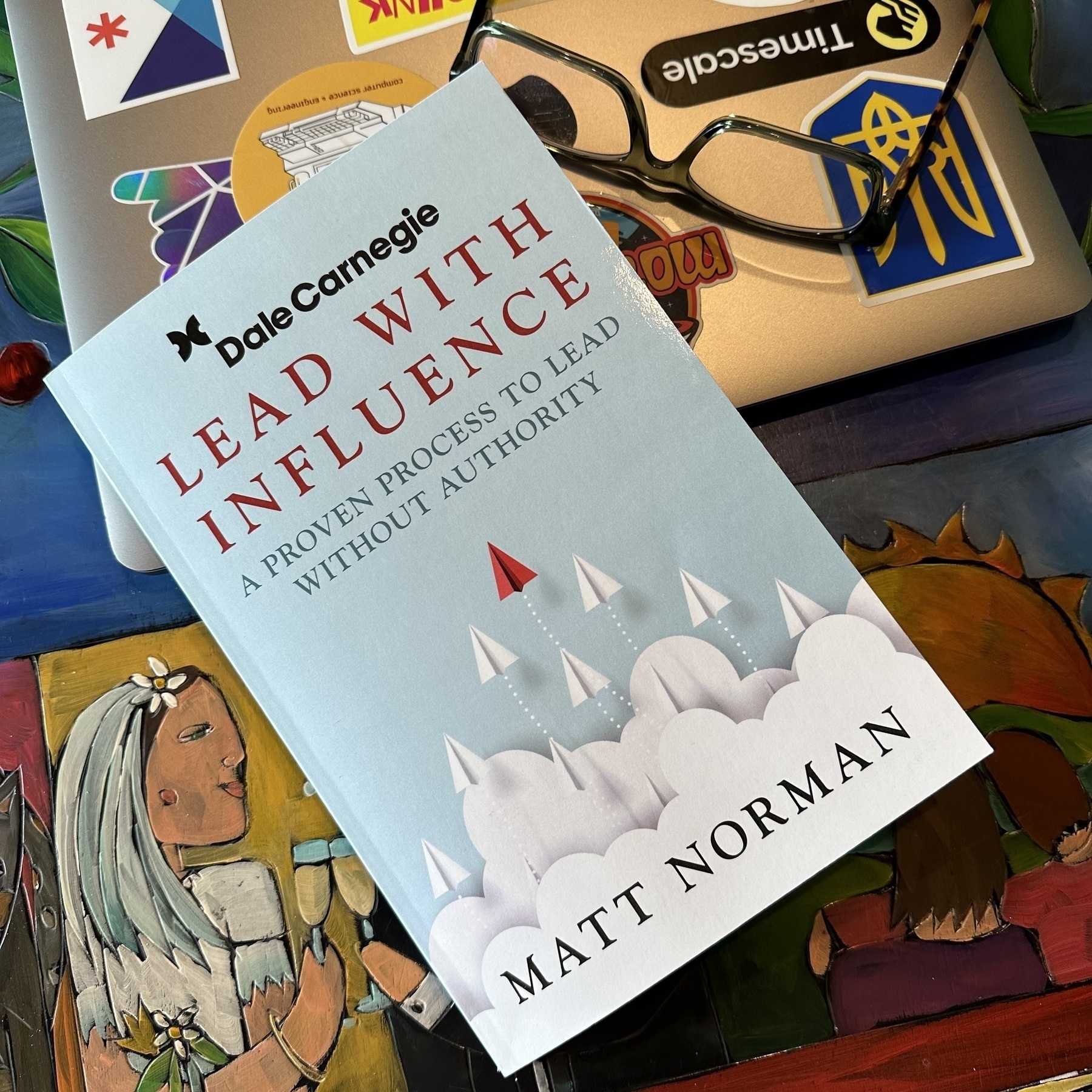Lead With Influence: A Proven Process To Lead Without Authority
I’ve met Matt Norman a few times. He is an incredibly outgoing, generous, and nice person that happily shares his insights with others. When he asked me if I would like an early read of his new book Lead With Influence I said yes right away.
Influence is an important topic, particularly in modern organizations that go far beyond a simple hierarchal view of the organization. To get things done, regardless of title and position, you need to influence people and sell them on your ideas. Knowledge work doesn’t happen because you tell someone to do it. Cross-functional teams are the norm and require influence to align around their objectives and achieve success. So, how do you achieve this influence?
This is where Norman’s book comes in. He walks the reader through all of the components of creating influence. He includes many resources in the form of different checklists and mental models to help the reader work through creating influence on their own. This is a book that could easily come with worksheets (or make your own) to help you create a strong case for what you are working to influence in any given situation.
I would recommend this book to knowledge workers that find themselves working in cross-functional teams toward a goal (isn’t this all knowledge workers?). The book is approachable by anyone in business even if you have very little training or experience in these topics.
Here is the table of contents so you can get a feel for the book.
PART ONE — Position: Setting the Table for Influence
- Prioritize Availability over Productivity
- Build both Predictive and Vulnerability-Based Trust
- Pay Attention to the Little Things
- Be like a Salmon
- Use Value Language
- Talk like a Palace Builder
PART TWO — Probe: Facilitating New Ways of Thinking
- Explore the Four Parts of Human Thinking That Drive Influence
- Develop the Art of Facilitation
- Summarize Regularly
PART THREE — Propose: Making Your Ideas Known
- Explain in a Way That Will Resonate
- It’s Not Just What You Say, but How You Say It
PART FOUR — Persuade: Managing Resistance and Tension
- Be a Nonanxious Presence
- Respond instead of Reacting
- Persuade through Pushback
- Consider Whom You’re Trying to Change
PART FIVE — Institutionalizing Leadership Influence
- Coaching for Improved Performance
- Reinforcing Thought and Communication Patterns
- The Culture of Influence
- Conclusions About Leading With Influence
